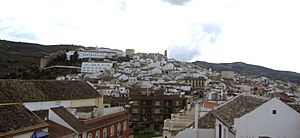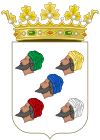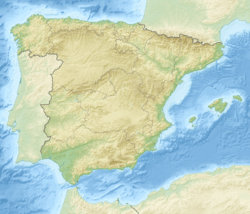Baena facts for kids
Quick facts for kids
Baena
|
|||
|---|---|---|---|
 |
|||
|
|||
| Country | Spain | ||
| Autonomous community | Andalusia | ||
| Province | Córdoba | ||
| Comarca | Campiña de Baena | ||
| Area | |||
| • Total | 362.5 km2 (140.0 sq mi) | ||
| Elevation
(AMSL)
|
405 m (1,329 ft) | ||
| Population
(2018)
|
|||
| • Total | 19,338 | ||
| • Density | 53.346/km2 (138.166/sq mi) | ||
| Time zone | UTC+1 (CET) | ||
| • Summer (DST) | UTC+2 (CEST (GMT +2)) | ||
| Postal code |
14850
|
||
| Area code(s) | +34 (Spain) + 957 (Córdoba) | ||
| Website | Town Hall | ||
Baena is a town and municipality in Spain. It is located in the province of Córdoba, which is part of Andalusia. You can find Baena near the Marbella River on a hill. It is about 52 kilometers (32 miles) southeast of Córdoba by road. In 2012, about 20,266 people lived in Baena.
Contents
Exploring Baena's Past
Ancient Roots: Roman Times
Baena has a long history, going all the way back to Roman times. It was once a Roman town called Baniana or Biniana. In 1833, people found an underground room. Inside were twelve special pots called cinerary urns. These pots held the ashes of people from the Pompeian family.
Medieval Changes: From Caliphate to Castile
After the powerful Caliphate of Córdoba ended, Baena faced tough times. The town was damaged by Berber groups, which stopped its growth and success.
Later, King Ferdinand III of Castile took over Córdoba. He quickly gained control of many towns in the area, including Baena, in 1241. It seems he met little resistance.
Fortifications and Battles: Protecting the Town
The top of the hill in Baena has strong fortifications. These were built to protect the town. In 1292, the Nasrid Kingdom of Granada, led by Muhammad II, tried to attack the fortress. However, they were not successful. The fortress was held by soldiers loyal to King Sancho IV. The coat-of-arms of Baena has five Moorish heads. This design remembers the time the town successfully defended itself.
The fortress was also a base for Gonzalo de Cordova, a famous military leader. In the 1800s, the Altamira family owned the fortress.
Life in Baena: Churches, Schools, and Trade
In the 1800s, Baena had four parish churches. It also had three schools run by sisters of charity. The girls' school was very well-known in the province. It taught reading, writing, math, and religious lessons.
In the 1870s, about 12,000 people lived in Baena. By the early 1900s, the population grew to about 15,000. The main goods traded in the 1800s were grain and olive oil. By the time of the First World War, horse-breeding and linen-weaving also became important. Even though the closest railroad station was in Luque, Baena continued to develop.
Modern Times: Baena's Resilience
During the Spanish Civil War, Baena experienced a very difficult period. The town faced significant challenges and changes.
Today, high-quality olive oil is still the most important part of Baena's economy. South of the town, you can find the beautiful Sierras Subbéticas Natural Park.
Famous People from Baena
See also
 In Spanish: Baena para niños
In Spanish: Baena para niños





